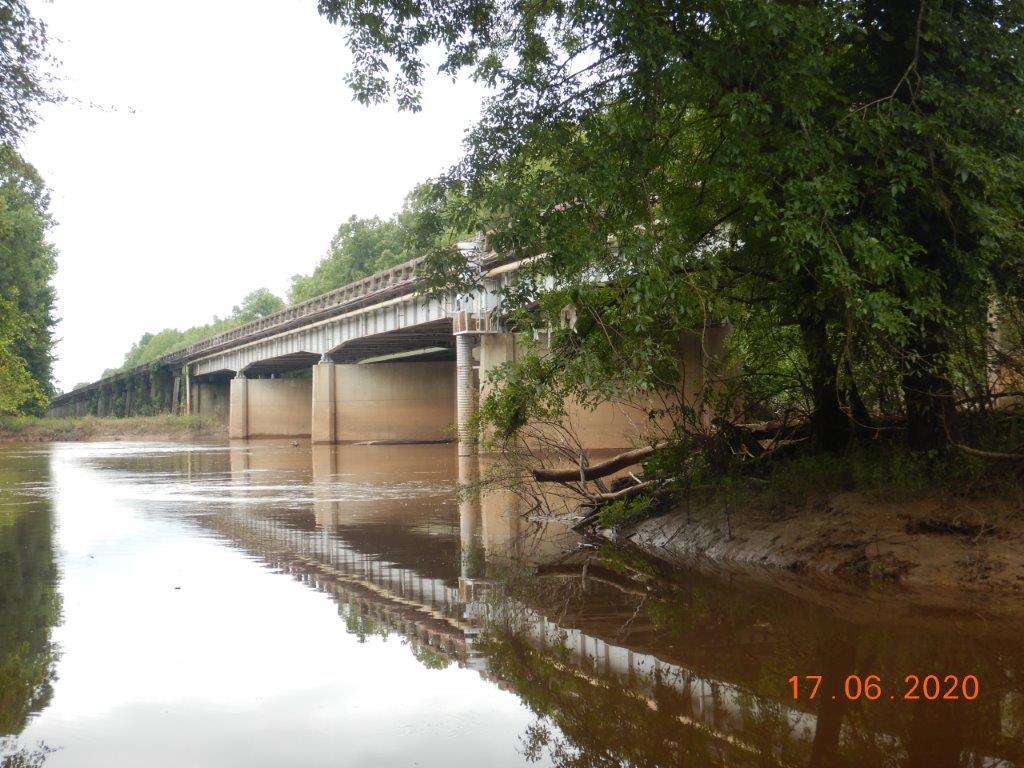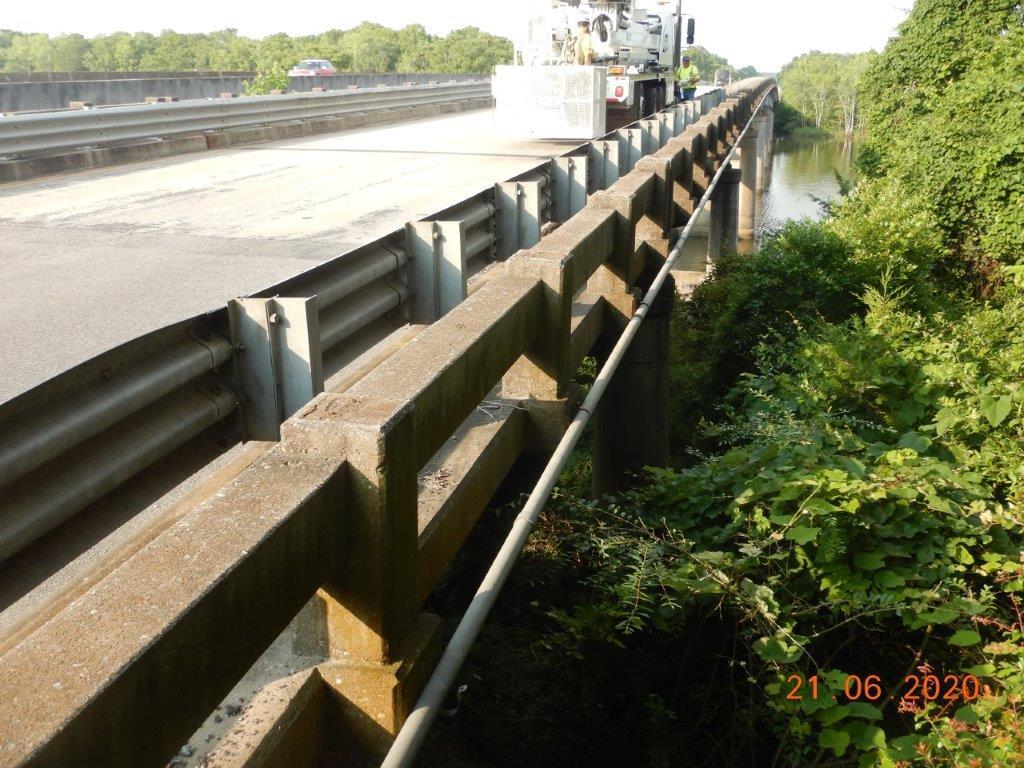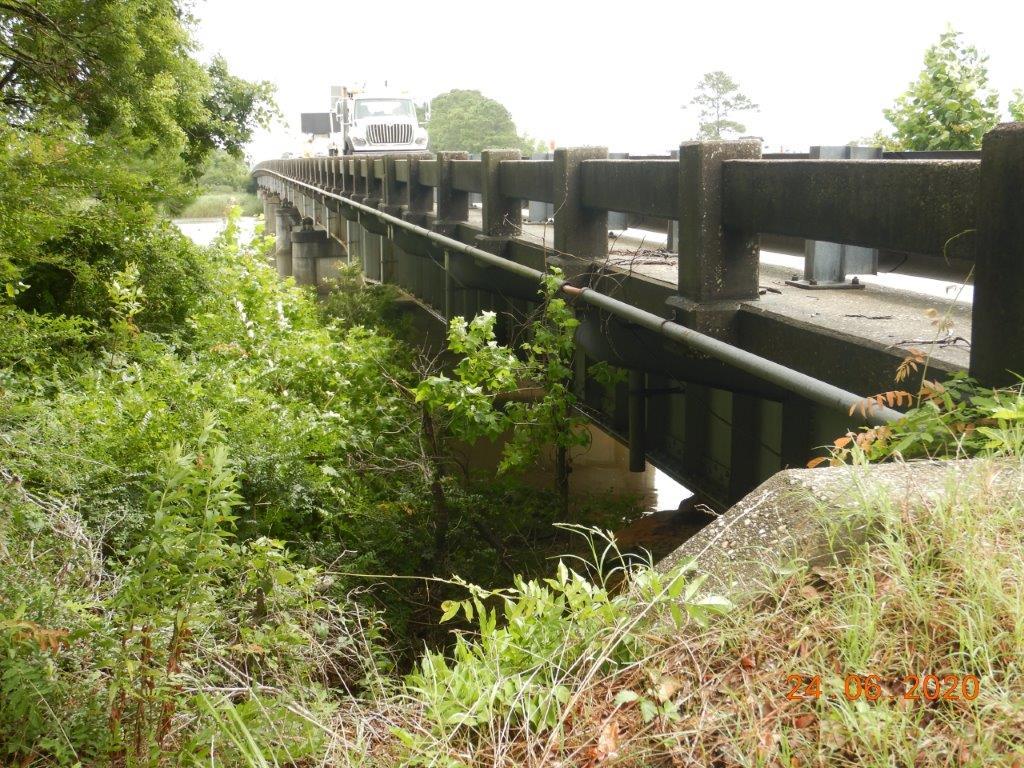scdot bridge load rating & evaluation engineering services
district 5, sc
AIE is is performing load rating, bridge inspection, and oversize/overweight permitting services for SCDOT. AIE has been tasked with performing site assessments and load ratings of 1,542 structures in SCDOT’s District 5. AIE is responsible for working with SCDOT District and Central Office personnel to gather all the available data for the assigned bridges such as plans, inspection reports, structure inventory, appraisal data, etc. Once a bridge file is developed for each structure, a site assessment will be performed in which the structure will be visited by AIE’s bridge inspection/load rating staff to verify that the structure was constructed in accordance with the plans, confirm the accuracy of the National Bridge Inventory data, and evaluate if there is any deterioration, damage, or other defects that may affect the load carrying capacity of the bridge. For all structures with defects suspected of reducing the load capacity, a subsequent detailed site assessment is being performed to accurately document the type, size, and location of the defects to ensure an accurate as-inspected model of the structure can be generated. Detailed site assessments are also performed on bridges for which no plans could be located, and accurate measurements of all original member sizes are taken as well as documenting any deterioration. In all cases, detailed drawings are prepared of all the bridge components which are used for the load rating and added to the bridge file for future reference. Many of the detailed site assessments AIE has performed to date have required traffic control consisting of single and multilane closures, shoulder closures, ramp narrowing, and flagging operations, and access equipment such as UB62 snoopers, bucket trucks, and Hydraplatforms. All traffic control setups have been set up in accordance with the MUTCD requirements as well as SCDOT’s Work Zone Traffic Control Procedures and Guidelines for SCDOT Maintenance Activities.
The vast majority of the structures are being load rated using AASHTOWare’s BrR software in LRFR methodology. For structures that cannot be modeled with BrR, SCi Bridge, MDX, and CANDE are being used as approved alternatives. The assignment has included a wide variety of structures from major river crossings with girder-floorbeam-stringers systems and large curved steel structures down to simple slabs and culverts. In addition, substructure ratings are being performed on all bridges with timber substructures possessing a condition rating of 5 or less (approximately 200 structures). As part of our deliverable, we are preparing labeling diagrams in MicroStation for every bridge to be used to ensure consistent orientation and bridge component labeling for all future inspections, load ratings, repair designs, etc. We are also reviewing the NBI data for each to ensure that it is correct and accurate, and updating the load rating values once the rating is complete. We prepare a Data Correction form for each structure indicating the NBI data that we are updating and make the updates in SCDOT’s Bridge Inspection Online (BIO) software. For bridges that generate non-passing ratings, posting avoidance measures are attempted as outlined in SCDOT’s Load Rating Guidance Document (LRGD). require posting due to the load rating results, a posting form is prepared and submitted along with the load rating summary form indicating the posting weight and required signage. All of these documents along with all available plan sets, supplemental calculations, and all previous inspection reports on record, are then uploaded to ProjectWise to generate a complete bridge file for each structure in their inventory.
In addition, AIE has been tasked with developing and implementing an oversize/overweight permitting process for SCDOT. For this task, AIE is working with SCDOT’s permitting software vendor to develop criteria for their automated permitting software. AIE is reviewing neighboring states’ permit processes to provide SCDOT recommendations and business rules for the implementation of their system. Once the parameters are approved by SCDOT, AIE will work with the vendor to implement a workflow process to assess potential routes for oversize/overweight loads using NBI data and the results from BrR and alternative software. AIE will be developing a step-by-step mapping of the process and prepare an Oversize/Overweight Permitting Manual and create and maintain an independent BrR database for all of SCDOT’s inventory and train and coordinate with SCDOT permitting staff to transition to the new permitting process. In addition, AIE will analyze Super/Mega load vehicles as requested by SCDOT.
Highlights
- Client: SCDOT
- Duration: 2018-Present
- Project Scope:
- BrR
- CANDE
- SCi Bridge
- MDX
- LRFR Methodology
- Detailed Site Assessments
- Posting Analysis
- MOT
- Access Equipment
- NBI Data Verification









